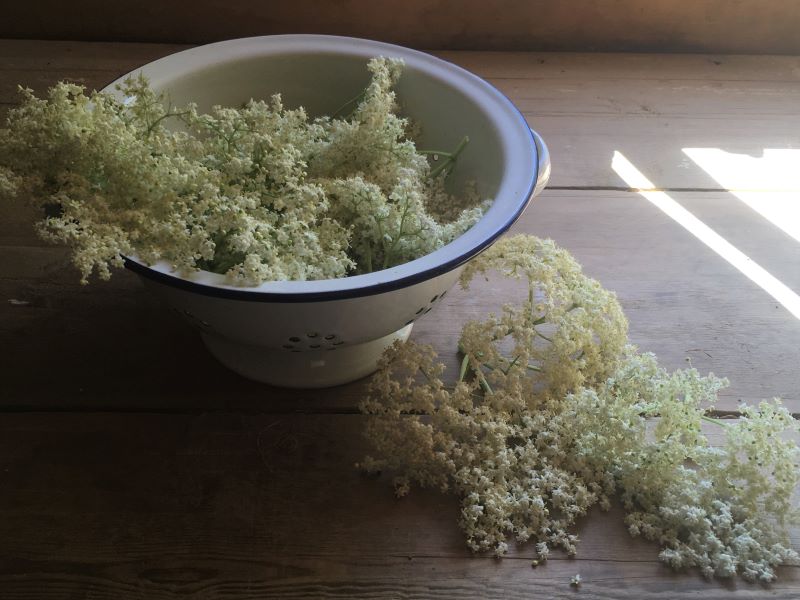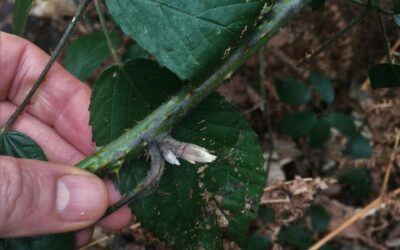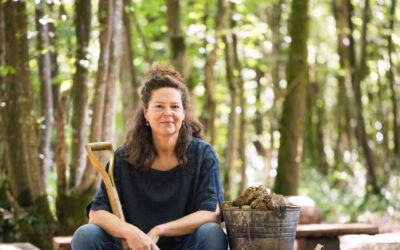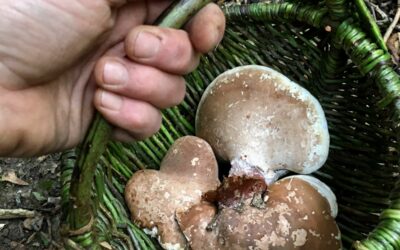Elderflower Cake
The fragrant, frothy elder flowers are out now, a lovely sign of summer. Elderflower cordial recipes abound, so here’s a favourite recipe of mine for elderflower cake. I’ve created a vegan version for this recipe too, which you’ll find further down.

Be sure to correctly identify your elderflowers, they grow as a shrub called Sambucus, and are not to be confused with umbellifers.
Elderflower bushes grow abundantly in the UK, in woods and along roadside hedgerows. From late May you’ll see masses of tiny white flowers hanging in sprays which develop into purple elderberries later in the summer.
Pick elderflowers on a sunny day by cutting off a whole ‘plate’ of the small flowers. Choose the ones that have flowers which are fully open, avoiding those that are starting to brown.

Elderflower and Almond Cake
Ingredients 4 large heads of elderflower (pick ones that are fully open), 110g self raising flour, 2 eggs, 100g sugar (or other sweetener eg honey, rice syrup etc), 55g butter, melted and cooled, 55g ground almonds.
Method Line a 20cm cake tin with baking parchment. Shake the elderflowers to dislodge any insects and trim off the stems. Sit them on the base of the tin (on top of the baking parchment), flowers upwards. Beat eggs with the sugar until pale and fluffy. Add melted butter then sieve in the flour and ground almonds and mix to a smooth batter. Pour into cake tin over the flowers. Bake at 180C/350F for 30 mins or until firm to the touch. Let it sit for 5 mins, run a knife round the edge and turn onto a rack to cool. Dust with icing sugar to serve.
Vegan Elderflower and Almond Cake
Ingredients 4 large heads of elderflower (pick ones that are fully open), 125ml light vegetable oil, 300ml plant milk, 2 tablespoons rice syrup, 1 tsp bicarbonate of soda, 250g plain flour, 50g ground almonds, 250g sugar.
Method Line a 20cm cake tin with baking parchment. Shake the elderflowers to dislodge any insects and trim off the stems. Sit them on the base of the tin (on top of the baking parchment), flowers upwards. In a cup, dissolve the bicarb in 4 tablespoons of the milk. In a small saucepan, warm the rest of the milk and the rice syrup. Sieve the dry ingredients into a large mixing bowl. Then add all the wet ingredients and whisk until you have a smooth batter. Pour gently over the flowers in the tin and bake for 30 mins at 180C/350F. Then reduce the heat to 160C and bake until firm to the touch. Let it sit for 5 mins, run a knife round the edge and turn onto a rack to cool. Dust with icing sugar to serve.
These recipes also work well with other fragrant leaves eg rose geranium, peach or blackcurrant. As the cake bakes the scent works its way through, leaving a delicate but distinctive presence.


